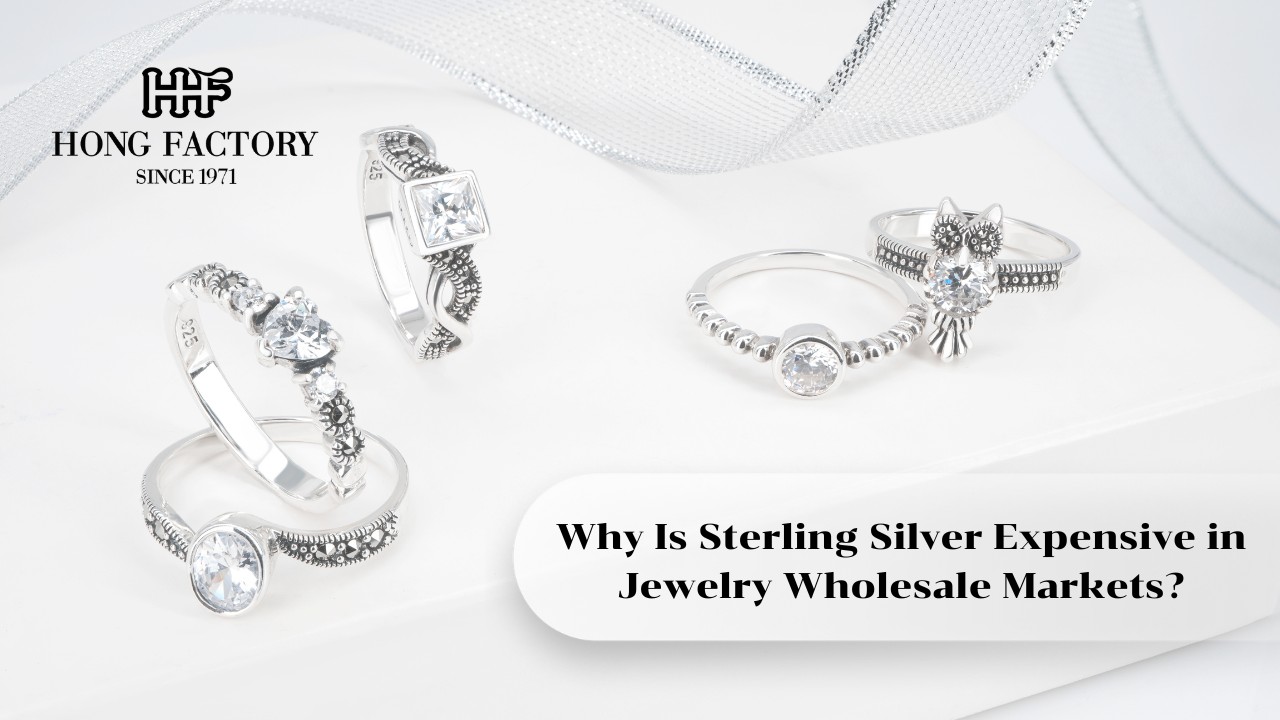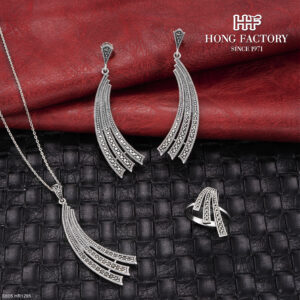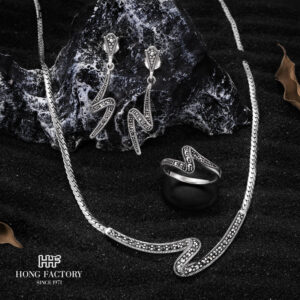
Why Is Sterling Silver Expensive in Jewelry Wholesale Markets?
- by admin
Sterling silver is one of the most popular materials in the global jewelry industry, loved for its elegant shine, durability, and versatility. Yet, many buyers in the wholesale market are surprised by its price, especially when compared to other metals used for bulk jewelry production. The question arises why is sterling silver expensive in jewelry wholesale markets? The answer lies in material quality, craftsmanship, market demand, and the precious metal’s inherent value. Titanium earrings for sensitive ears
What Is Sterling Silver?

Sterling silver is a high-quality alloy consisting of 92.5% pure silver and 7.5% copper or other strengthening metals. This composition ensures the metal retains silver’s radiant glow while being durable enough for everyday wear. Every genuine piece of sterling silver carries a hallmark, usually “925,” confirming its authenticity and purity.
In wholesale markets, sterling silver remains a top choice for jewelers and retailers who seek a balance between luxury and affordability. It’s a precious metal that holds intrinsic value, making it more than just another material it’s an investment in craftsmanship and long-term worth.
Is Sterling Silver Expensive?
The question “Is Sterling Silver Expensive” often depends on context. Compared to gold or platinum, silver seems affordable. However, in the jewelry wholesale market, sterling silver can appear expensive due to its purity, production costs, and market fluctuations.
Key factors that make sterling silver costly in wholesale markets include:
- High material purity: Silver is a precious metal with tangible, market-driven value.
- Global price fluctuations: Silver prices change daily, directly impacting wholesale costs.
- Craftsmanship: Each piece requires careful molding, polishing, and quality control.
- Processing and finishing: Proper plating, anti-tarnish treatment, and polishing increase costs.
- Export and import factors: Currency exchange, taxes, and shipping fees add to wholesale pricing.
Therefore, even though sterling silver is more affordable than gold, its status as a real, valuable metal makes it pricier than alternative materials in the bulk jewelry trade.
The Role of Craftsmanship in Wholesale Jewelry
Wholesale doesn’t always mean low quality. In fact, reputable manufacturers invest heavily in skilled labor and advanced techniques to maintain consistency across thousands of pieces. Each sterling silver ring, pendant, or bracelet undergoes detailed inspection to ensure that the final product meets industry standards.
From wax modeling and casting to hand polishing and stone setting, every stage demands precision. This level of craftsmanship adds labor costs but ensures jewelers and retailers receive premium-quality products ready for resale.
Market Value and Global Demand
Sterling silver is considered a semi-precious metal, and its price fluctuates based on global silver markets. When silver prices rise, wholesale jewelry prices follow. Additionally, strong global demand especially from markets like the U.S., Japan, and Europe drives wholesale prices upward.
Wholesale suppliers must account for the cost of sourcing pure silver, refining it, and converting it into intricate jewelry. As a result, sterling silver’s consistent market value ensures stability for investors and jewelers alike.
Why Retailers Prefer Sterling Silver

Even with higher wholesale prices, sterling silver remains a top-selling metal for jewelry retailers worldwide. The reasons are clear:
- Timeless appeal: Sterling silver never goes out of style.
- Versatility: It suits everything from minimalist to luxury designs.
- Hypoallergenic: Safe for sensitive skin compared to cheap alloys.
- Brand image: Retailers offering genuine silver gain credibility and trust.
Retailers are willing to pay more for sterling silver wholesale because it provides reliability, brand value, and customer satisfaction.
Sterling Silver vs. Other Wholesale Materials
In the wholesale market, sterling silver competes with other metals such as stainless steel, brass, and gold-plated alloys. While those materials are cheaper, they lack the intrinsic value and aesthetic quality of real silver.
Comparison overview:
- Sterling Silver: Precious, long-lasting, tarnish-resistant, resellable.
- Stainless Steel: Durable but lacks the luxurious appeal.
- Brass/Alloys: Affordable but prone to tarnish and skin irritation.
- Gold Plated: Temporary shine without long-term value.
Thus, while sterling silver demands a higher initial investment, it guarantees lasting beauty and customer trust.
Bulk Production and Finishing Costs
Producing sterling silver jewelry in bulk involves several steps that increase overall cost. Casting molds, plating processes, gemstone settings, and hand-polishing all contribute to the price per unit. Furthermore, maintaining consistent quality across large batches requires stringent inspection and specialized equipment.
Factories specializing in high-quality sterling silver must invest in machinery, skilled artisans, and anti-tarnish technology to ensure durability. These costs are passed down to wholesalers and retailers but result in superior-quality products that stand out in the market.
Investment and Resale Potential
Unlike base-metal jewelry, sterling silver holds real market value. Wholesalers and retailers can view it as a semi-liquid asset since silver prices are influenced by international commodity markets. This means that sterling silver jewelry retains resale potential, making it a secure choice for long-term business.
Even in economic downturns, silver remains a sought-after material because it offers luxury appeal at a more accessible price point than gold.
Sterling silver’s expense in the wholesale market is justified by its authenticity, craftsmanship, and lasting value. It’s not just a metal it’s a precious material that represents both artistry and investment.
So, while some may perceive sterling silver as costly in bulk, it actually provides exceptional value to jewelers and retailers. From its intrinsic worth to its timeless appeal, sterling silver continues to shine as one of the most rewarding materials in the global jewelry wholesale industry.
Sterling silver is one of the most popular materials in the global jewelry industry, loved for its elegant shine, durability, and versatility. Yet, many buyers in the wholesale market are surprised by its price, especially when compared to other metals used for bulk jewelry production. The question arises why is sterling silver expensive in jewelry…